What’s to be found in the excellent Dover Transport Museum?
Posted by Chris Graham on 19th January 2024
Patrick Boniface visits the impressive Dover Transport Museum and reports on the fascinating, historical exhibits to be found there.
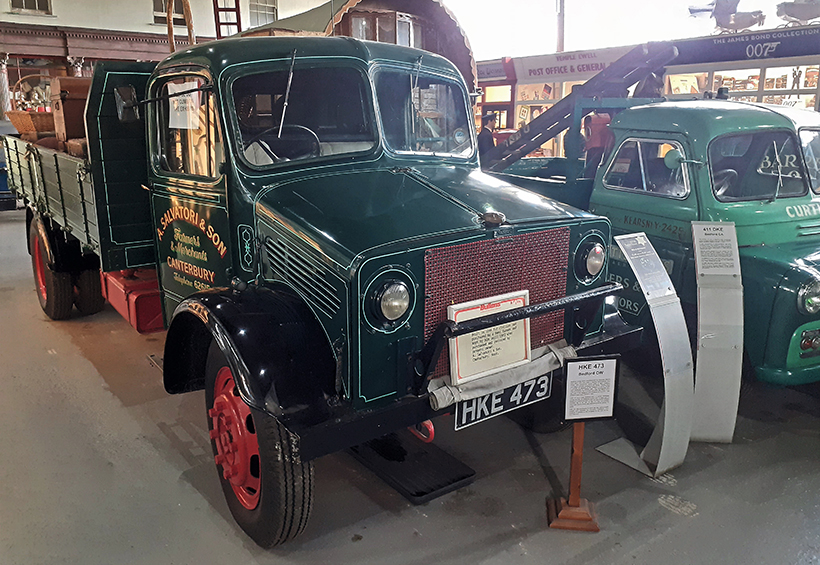
If anywhere could be said to be an epicentre of transportation, then Dover would be a good place to start. Trains, ferries and even at one time, hovercraft, all used the Kentish port. Dover has been a crucial transportation hub since Roman times and in the 21st century it continues to operate 24 hours a day 365 days a year. Dover Transport Museum, just outside the town at Whitfield is home to a huge wealth of interesting historical items collected by its members over the years.

Dover Transport Museum is set in nearly two acres of attractive grounds, with ample free car and coach parking. The museum’s two large galleries include more than 50 historic road vehicles, many sets in period street scenes, with shops and displays showing off the many exhibits and artefacts, and a vintage garage. Many are unusual or unique, like our beautifully restored Romany caravan and the Aveling & Porter steam roller!

Among the more unusual exhibits is an Automobile Association BSA motorcycle combination which were the mainstay of the AA’s breakdown fleet in the 1950s and early 1960s. Over 2000 of the BSA M20 and later M21 models were produced for the AA with production ending in 1961. During the 1960s, the need to carry more equipment and stay warm and dry meant the motorcycle combination was replaced by the Mini van. The traditional AA patrol salute was also abandoned in 1961. The last BSA was retired in 1968. The same year that they stopped using motorcycle combinations. It wasn’t, however, the end of the use of motorbikes in the AA as the organisation instead turned to solo motorcycles in major cities to move more quickly through traffic. In 1972 the AA established a special AA ‘Flying Squad’ using 500cc Triumph T100Rs.
Nearby in the museum, visitors can see one of the oldest exhibits a 1929 Dennis GL fitted with a ‘toast-rack’ body by J Roberts of Llandudno Urban District Council who used it for tours of the Great Orme until 1953. This vehicle is one of only three known survivors of its type and was for a time operated by Glenton Tours of Peckham Rye.
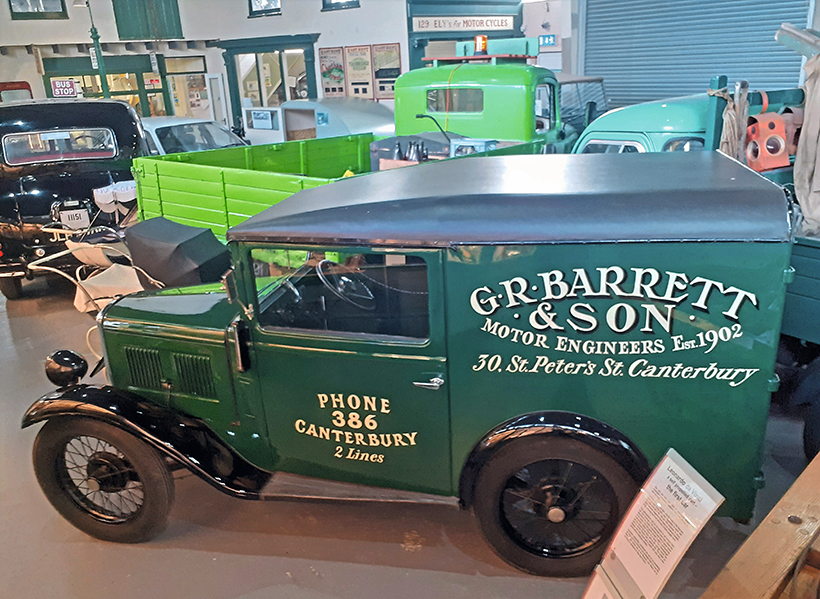
An even older rare vehicle is located close by in the form of a 1914 Pierce Arrow R7 5-ton truck. This vehicle and others like it were pressed into military service during the First World War transporting troops, munitions and supplies to the frontline. This example is one of only three known survivors of its type having been abandoned by a travelling funfair and forgotten in a scrapyard in Chambost-Allieres. Discovered in 1983 it has been meticulously restored by the Greenham Sand & Ballast Company Ltd. This company, now part of the larger Brett Organisation, operated a fleet of 40 Pierce Arrows in the 1920s. Interestingly the Pierce Arrow is in full working order.

The medieval town of Sandwich is around 15 miles from Dover, so it is perhaps no surprise that the small town’s history is represented at the museum in particular its town fire service. Sandwich Town Fire Brigade’s 12-man horse-drawn manual pump was built by Merryweather & Sons and purchased in 1874. The pumpers would occasionally include members of the public who would be paid for their labours in beer!
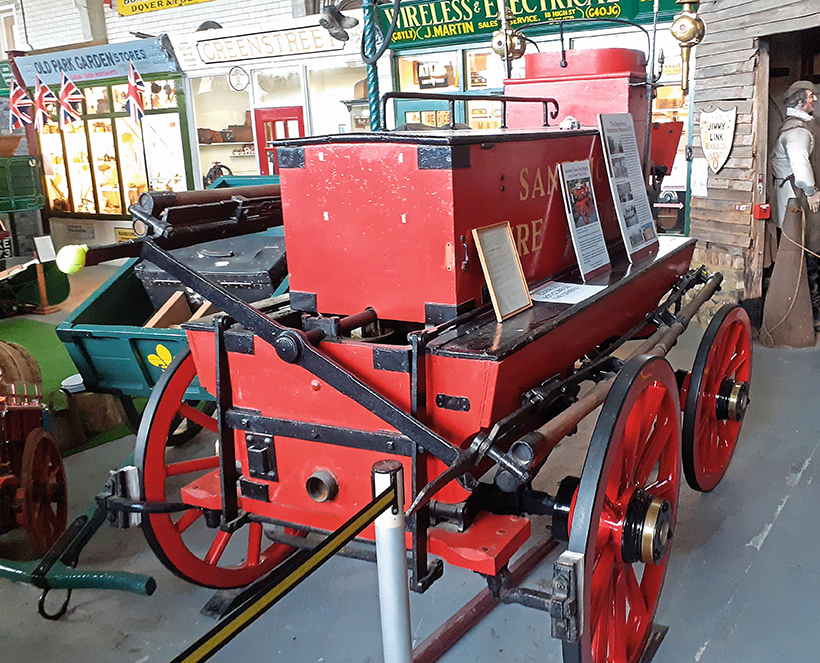
The wartime Bedford OW was produced in 1944 for essential civilian use. The example at the Dover Transport Museum was originally used for farm use but was subsequently bought by Salvatori Transport who still own the vehicle and have it on long term loan to the museum. Another commercial vehicle of note is a fine example of the Bedford CA. A distinctive light commercial vehicle produced between 1952 and 1969 by Vauxhall Motor’s subsidiary Bedford Vehicle it was manufactured in short wheelbase and long wheelbase forms, each available in either a 10-12 cwt or 15cwt version. 411 DKE was once a familiar sight around Dover being owned by Curtiss brothers who were local builders. Close by is a two-ton Austin 301 that the museum volunteers have completely overhauled within the museum.
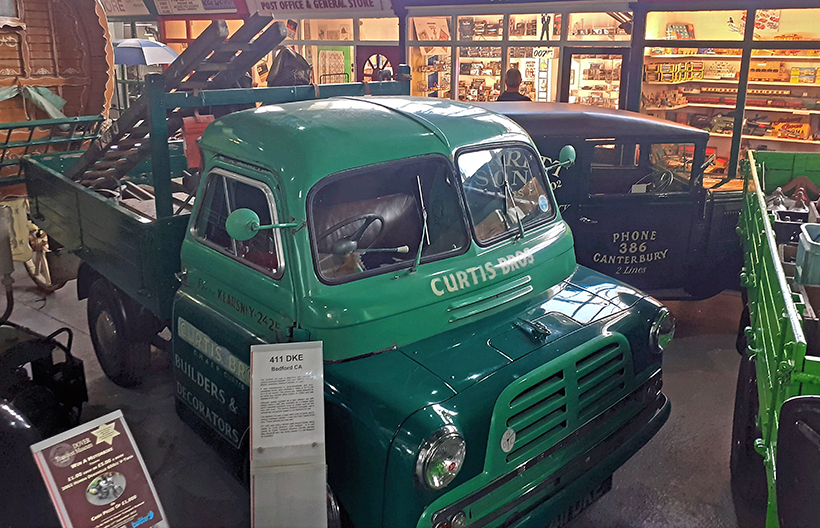
Another rarity is a nice example of a Winchester Taxi. The fibreglass-bodied taxi was developed and built by Winchester Automobile (West End) Ltd, a subsidiary of the Westminster Insurance Group after consultation with cabmen. The result was a conservatively styled, low maintenance vehicle that was manufactured in several models from 1963 to 1972. The model was, however, unsuccessful.
Perhaps one of the most unusual and distinctive vehicles on display at the Dover Transport Museum, is a Pashley Ice Cream Cart tricycle from the early 1950s. The firm of WR Pashley & Co were based in Chester Street, Aston, Birmingham from 1926. They were a bicycle and motorbike manufacturer. In late 1949, the company introduced a three-wheeled commercial vehicle. It had three speeds and used a 197cc Villiers engine. The rear section of the vehicle was based on a motorcycle form and the front had twin independently sprung eight-inch wheels with an open trunk between them. It had a steering wheel and drum brakes. The rear section was enclosed by a steel bonnet carrying a padded seat for the driver. Sadly, the market for these unique vehicles was fleeting and by 1953 they were already becoming quite dated.
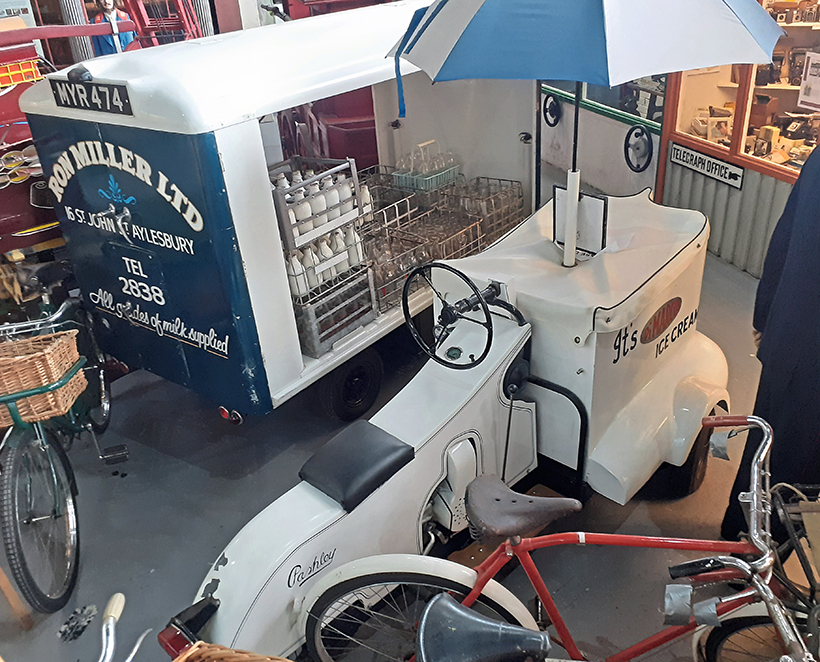
Dover Transport Museum is a rabbit warren of unique and interesting items that reflect the town’s varied history of transportation. The museum has large collections of working model railways, hundreds of models, maritime history displays, and many other displays which go beyond just transport, make an enjoyable visit for everyone.
This feature comes from the latest issue Heritage Commercials, and you can get a money-saving subscription to this magazine simply by clicking HERE
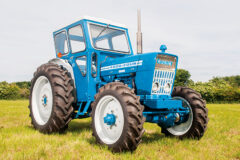
Previous Post
A beautifully-restored 1972 County 4000-Four
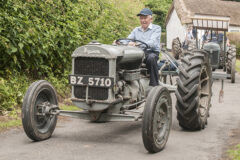
Next Post
A much-cherished 1938 Ferguson Brown still going strong!



